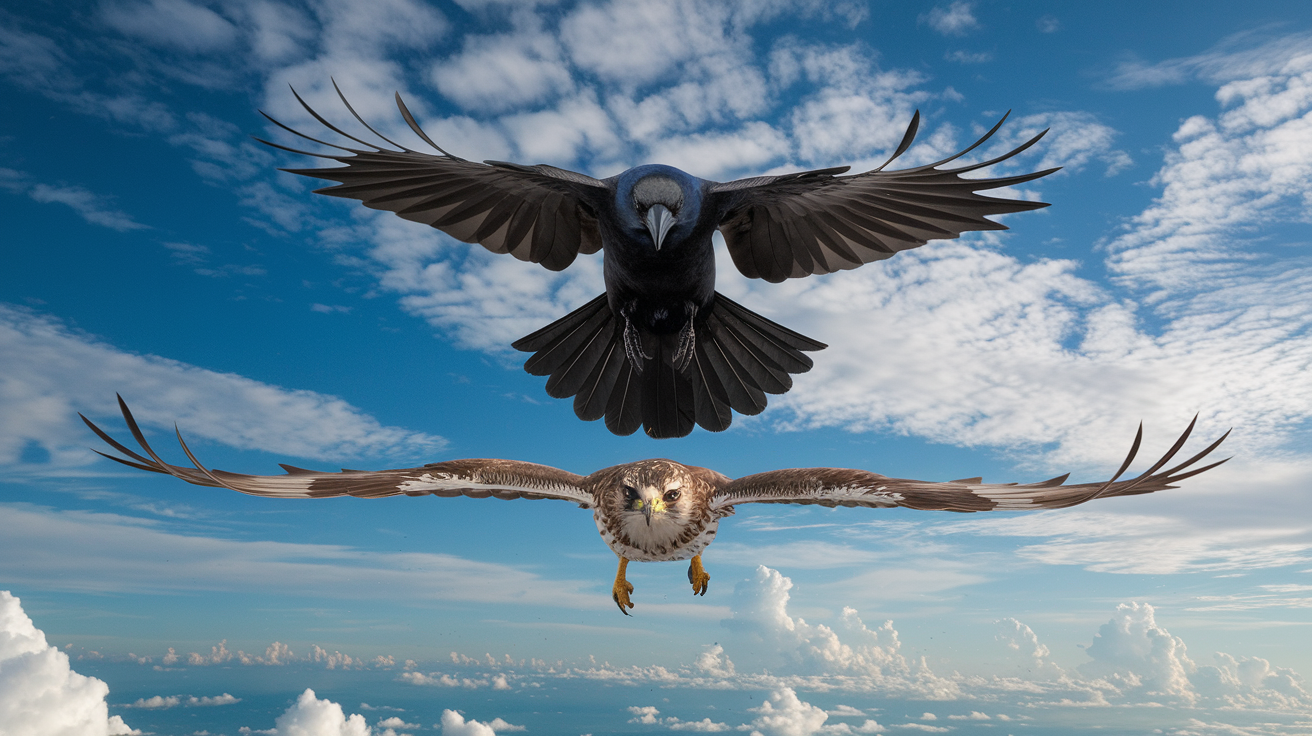Mobbing Behavior in Birds: A Closer Look at Crows and Hawks
Key Takeaways
- Crows engage in mobbing behavior to protect their nests and young from predators like hawks.
- Mobbing is a collective defensive strategy, where birds work together to confuse and deter a predator.
- Territorial defense is crucial for crows, as it ensures access to resources and safety for their offspring.
- Mobbing can serve as a learning experience for younger crows, helping them develop essential defense skills and strengthen social bonds.
Defining Mobbing Behavior in Birds
Mobbing behavior is a fascinating phenomenon observed in many bird species when they confront predators. Essentially, it involves a group of birds gathering to chase away or harass a threatening bird, like a hawk. This behavior serves as a defensive tactic and can significantly reduce the risk of predation.
Examples of Mobbing in Various Bird Species
Different bird species show unique ways of mobbing. For instance, crows and jays often dive and swoop at the predator, while other birds may simply create a loud chorus of alarm calls. This strategy can vary based on the species and the environment they inhabit.
Crows vs. Hawks
Territory is crucial in the bird world. For crows, defending their territory is essential not only for their safety but also for ensuring that their young can thrive. When a hawk invades their space, crows react promptly, employing mobbing behavior to assert their dominance.
The Importance of Territory in Bird Behavior
Territory serves as a safe space for birds to raise their young and find food. For crows, a well-defined territory means they have access to resources while also keeping predators at bay. When a hawk enters their territory, crows view it as a serious threat that must be addressed immediately.
How Crows Utilize Mobbing as a Defense Strategy
Crows are clever creatures, and they’ve adapted their mobbing behavior as a key defensive strategy. By working together, they can effectively disrupt a hawk’s hunting attempts, making it harder for the predator to target them or their young. This collective action is a smart way for crows to enhance their survival chances.
Behavior of Crows and Hawks
Understanding the interactions between crows and hawks can be fascinating! These two birds have very different behaviors and roles in their ecosystems. Crows often chase hawks as a way to protect their territory and young ones. This behavior, known as mobbing, shows how smart and social crows can be.
Frequently Asked Questions about Crow and Hawk Interactions
Many people are curious about why crows act the way they do around hawks. Here are some common questions and answers that can help clarify these interactions:
- Why do crows attack hawks? Crows attack hawks to protect their nests and young. They also want to defend their territory.
- What is the significance of mobbing behavior? Mobbing helps to drive away potential threats, allowing crows to keep their environment safe.
- Do crows eat hawks? No, crows don’t eat hawks. They will attack them but not for food; it’s more about defense.
- How do different crow species interact with hawks? Different crow species may show varying levels of aggression and teamwork when dealing with hawks.
Conclusion
In conclusion, crows and hawks have a complex relationship that is shaped by their instincts and intelligence. While hawks are skilled hunters, crows use teamwork and strategy to defend themselves. Observing these interactions can give us great insights into their behavior and the roles they play in nature. By understanding mobbing behavior, we can appreciate the importance of territory and the clever ways in which crows protect themselves and their young.

